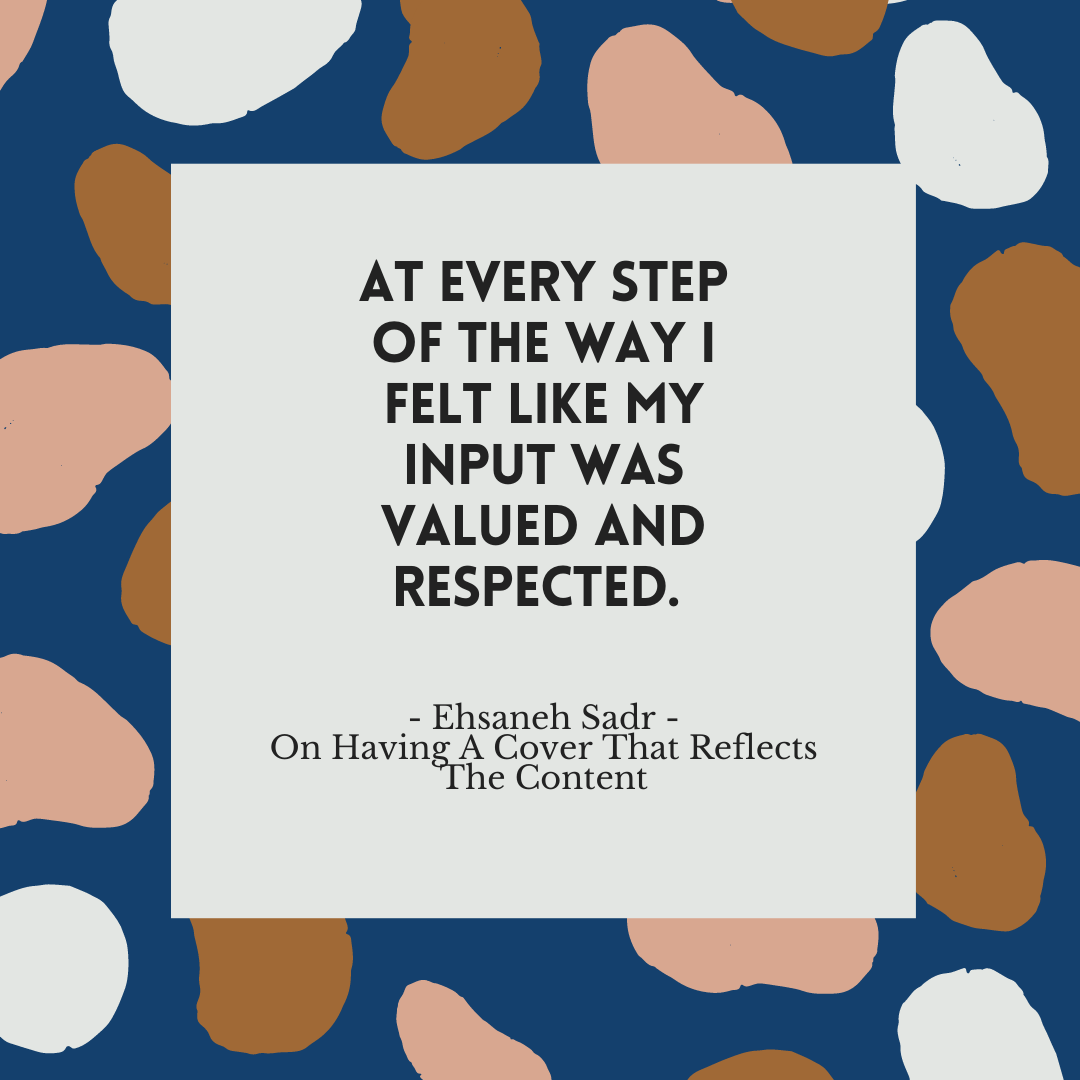I love talking to authors. Our experiences are so similar, yet so very different, that every one of us has a new story to share. Everyone says that the moment you get your cover it really hits you – you’re an author. The cover is your story – and you – packaged for the world. So the process of the cover reveal can be slightly panic inducing. Does it fit your story? Is it what you hoped? Will it sell? With this in mind I put together the CRAP (Cover Reveal Anxiety Phase) Interview.
Today’s guest for the CRAP is Ehsaneh Sadr, an Iranian-American novelist and activist with a PhD in International Relations. She has worked, in various capacities, on campaigns related to biking advocacy, Palestinian human rights, Iranian sanctions, access to credit for rural villagers, and safe spaces for children in crisis. Her debut novel A Door Between Us, released in September of 2020.
Did you have any pre-conceived notions about what you wanted your cover to look like?
Yes! It was extremely important to me that the cover reflect the setting of Tehran, Iran and something about the brave men and women of the Green Wave without playing into stereotypes that people might have about the country.
One of the central storylines in A Door Between Us is about a young couple whose families oppose their union due to political differences. My initial thought was for the cover to have pro-regime forces on one side and pro-democracy protestors on the other, with the couple in between, somehow bridging (or creating a door between) the two.
The concept wasn’t bad but within the confines of a small cover, it just didn’t work. We tried using flags to distinguish one side from the other but it ended up looking too militant and a bit alienating. Thank goodness the graphic artist, the incredible Zena Kanes had better instincts than I!
How far in advance from your pub date did you start talking covers with your house?
My book launched on September 1, 2020 and I started talking with the designer in December 2019.
One of the first things I did was send over a bunch of images intended to convey a feel for the novel. I included pictures of the Green Wave protests, the government crackdowns, and the clashes taking place in the streets of Tehran. I included every day scenes of men and women in indoor and outdoor settings to show how Iranians dress, what their homes look like, and what their typical meals are. And I also sent over examples of book covers I love like The Kite Runner, Lost Children Archive, and Finding Nouf.
Did you have any input on your cover?
Yes! The whole process and experience was quite lovely. After sending over images and discussing them, Zena came back with three different concepts. The first was based on my initial idea and immediately felt wrong. The second was a beautiful calligraphy-like rendering of the title across a series of Iranian arches. And the third, that I was immediately drawn to, was a precursor of the final cover. I especially loved the gorgeous rendering of the green fabric symbol of the brave men and women that comprised the Green Movement.
I shared the three options with a bunch of friends and got a lot of great feedback that helped confirm my choice. And from there I worked with Zena to tweak the colors and finalize some of the elements like the skyline of Tehran and whether we’d include a woman in a chador on the front.
At every step of the way I felt like my input was valued and respected. And I was lucky to be working with someone who was incredibly talented and committed to getting it right.
How was your cover revealed to you?
Well, since it was a pretty collaborative process, there weren’t any big surprises when we got to the final rendering.
The bigger ‘reveal’ was when I finally got to hold the hardcopy in my hands. I’d seen graphics of the cover and had also previously received the galley copies but the beauty and vibrancy of the final version was something else.
Was there an official "cover reveal" date for your art?
I’m with a small (but mighty!) press so we didn’t do an official ‘cover reveal.’ I was also fairly new to the publishing process so wasn’t even aware that was a thing. And I was brand new to social media so hadn’t really cultivated a ‘following’ that would have been excited about a cover reveal.
But I might enjoy doing a cover reveal for the second book. Especially if I end up loving the cover as much as I loved this one!
What surprised you most about the process?
I guess the biggest surprise is how swiftly and easily we were able to land on something that is such a perfect reflection of the book’s essential themes. The cover was important to me and I was worried about all the ways things could go wrong so the fact that it turned out so perfectly felt like a real gift.
Any advice to other debut authors about how to handle cover art anxiety?
Spend time looking at other books covers so you know what you like and what you don’t. Pull together a library of images that reflect themes of your book, not because any of them will necessarily go on the cover, but to give the designer a feel for what your story is about. And when it comes to giving feedback, be as specific as possible about what you like and what you’d like to change.





